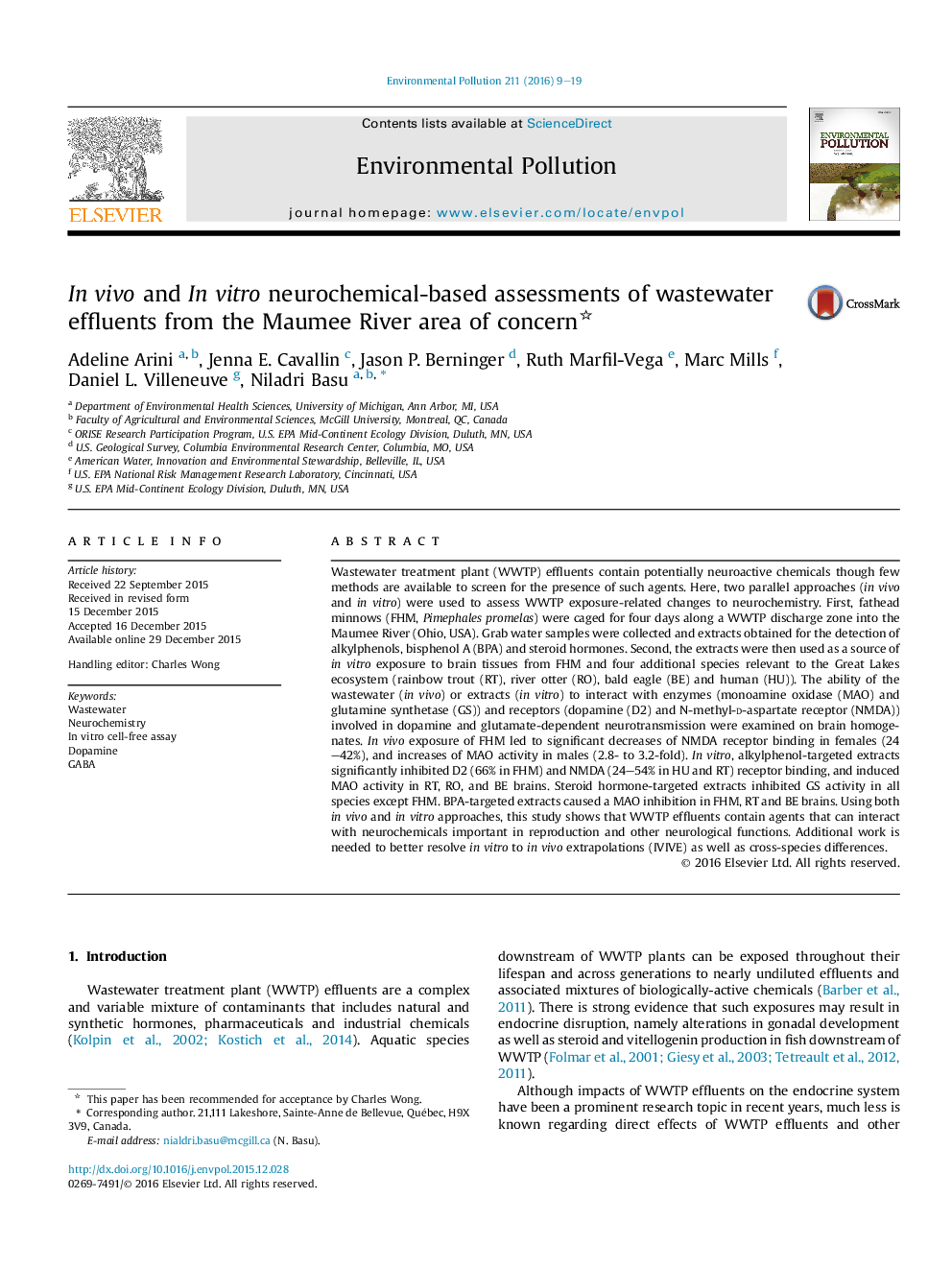| کد مقاله | کد نشریه | سال انتشار | مقاله انگلیسی | نسخه تمام متن |
|---|---|---|---|---|
| 6315458 | 1619162 | 2016 | 11 صفحه PDF | دانلود رایگان |

- We conducted in vivo and in vitro neurochemical-based assessments of WWTP effluents.
- Fish were exposed in vivo, brain samples (birds, mammals, fish) were dosed in vitro.
- In vivo exposure led to a decrease of NMDA binding and an increase of MAO activity.
- In vitro, alkylphenol-targeted extracts significantly inhibited D2 and NMDA binding.
- MAO was induced by alkylphenol extracts and inhibited by BPA extracts in some species.
Wastewater treatment plant (WWTP) effluents contain potentially neuroactive chemicals though few methods are available to screen for the presence of such agents. Here, two parallel approaches (in vivo and in vitro) were used to assess WWTP exposure-related changes to neurochemistry. First, fathead minnows (FHM, Pimephales promelas) were caged for four days along a WWTP discharge zone into the Maumee River (Ohio, USA). Grab water samples were collected and extracts obtained for the detection of alkylphenols, bisphenol A (BPA) and steroid hormones. Second, the extracts were then used as a source of in vitro exposure to brain tissues from FHM and four additional species relevant to the Great Lakes ecosystem (rainbow trout (RT), river otter (RO), bald eagle (BE) and human (HU)). The ability of the wastewater (in vivo) or extracts (in vitro) to interact with enzymes (monoamine oxidase (MAO) and glutamine synthetase (GS)) and receptors (dopamine (D2) and N-methyl-d-aspartate receptor (NMDA)) involved in dopamine and glutamate-dependent neurotransmission were examined on brain homogenates. In vivo exposure of FHM led to significant decreases of NMDA receptor binding in females (24-42%), and increases of MAO activity in males (2.8- to 3.2-fold). In vitro, alkylphenol-targeted extracts significantly inhibited D2 (66% in FHM) and NMDA (24-54% in HU and RT) receptor binding, and induced MAO activity in RT, RO, and BE brains. Steroid hormone-targeted extracts inhibited GS activity in all species except FHM. BPA-targeted extracts caused a MAO inhibition in FHM, RT and BE brains. Using both in vivo and in vitro approaches, this study shows that WWTP effluents contain agents that can interact with neurochemicals important in reproduction and other neurological functions. Additional work is needed to better resolve in vitro to in vivo extrapolations (IVIVE) as well as cross-species differences.
Journal: Environmental Pollution - Volume 211, April 2016, Pages 9-19